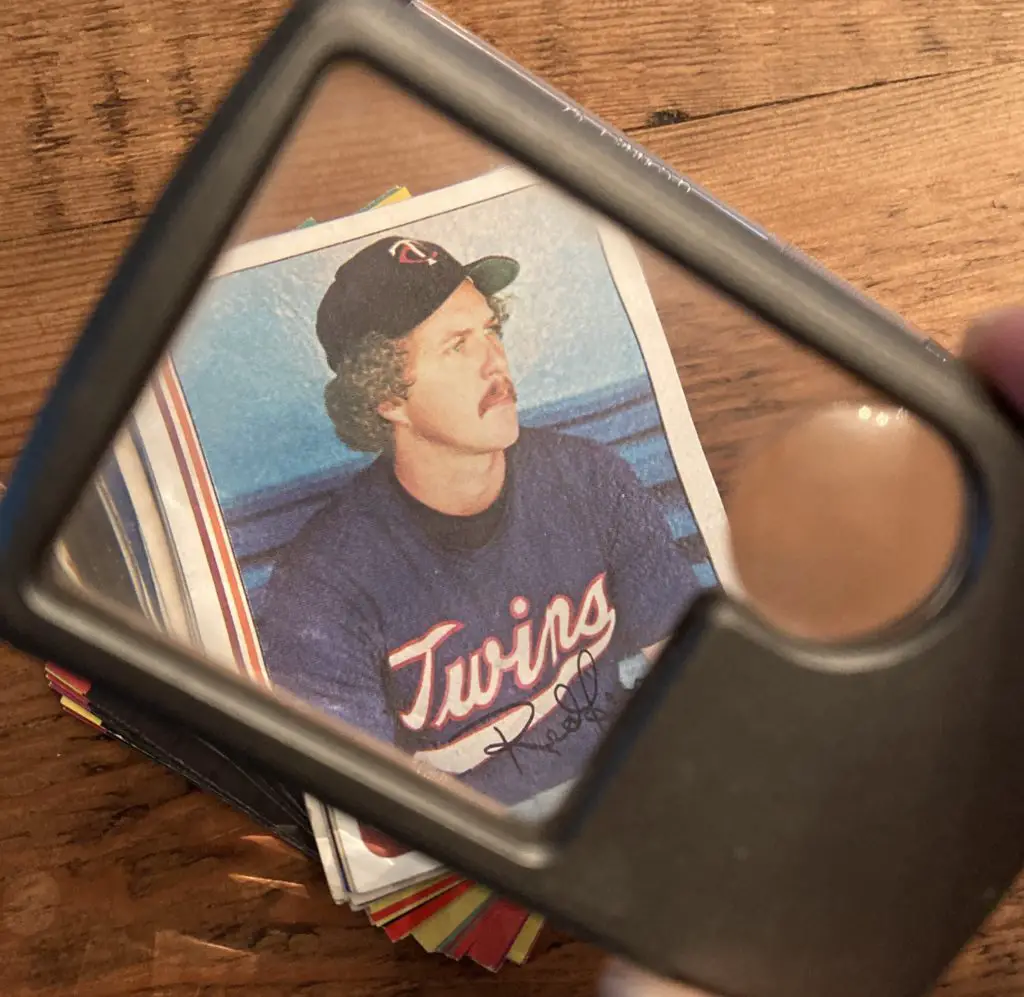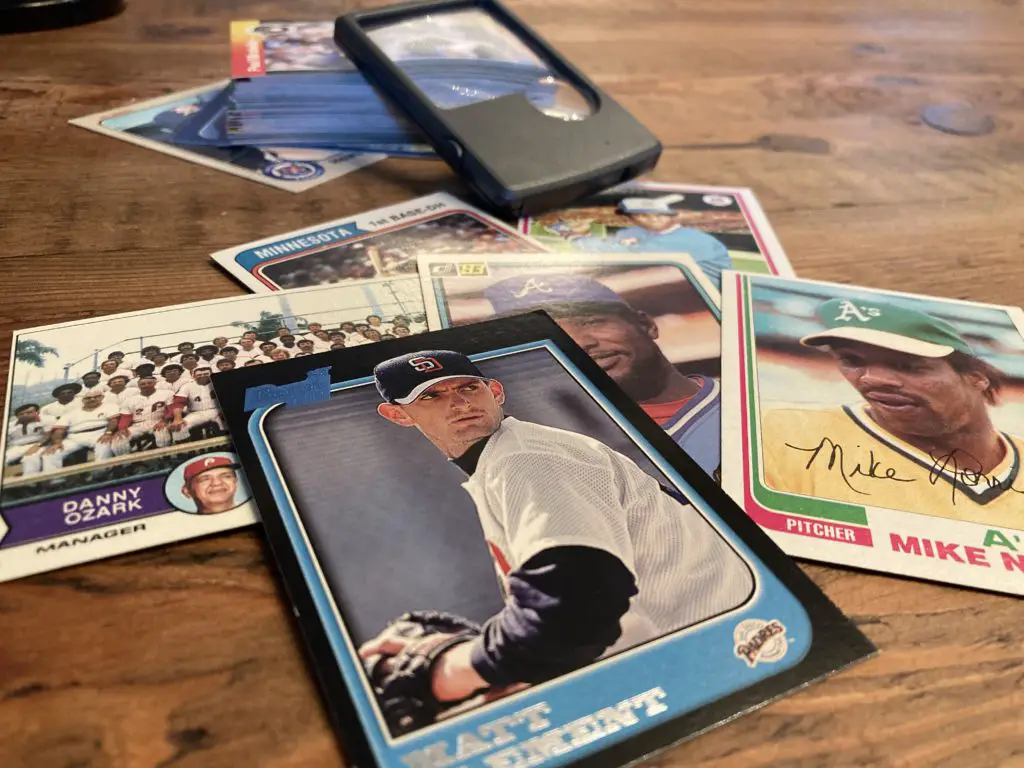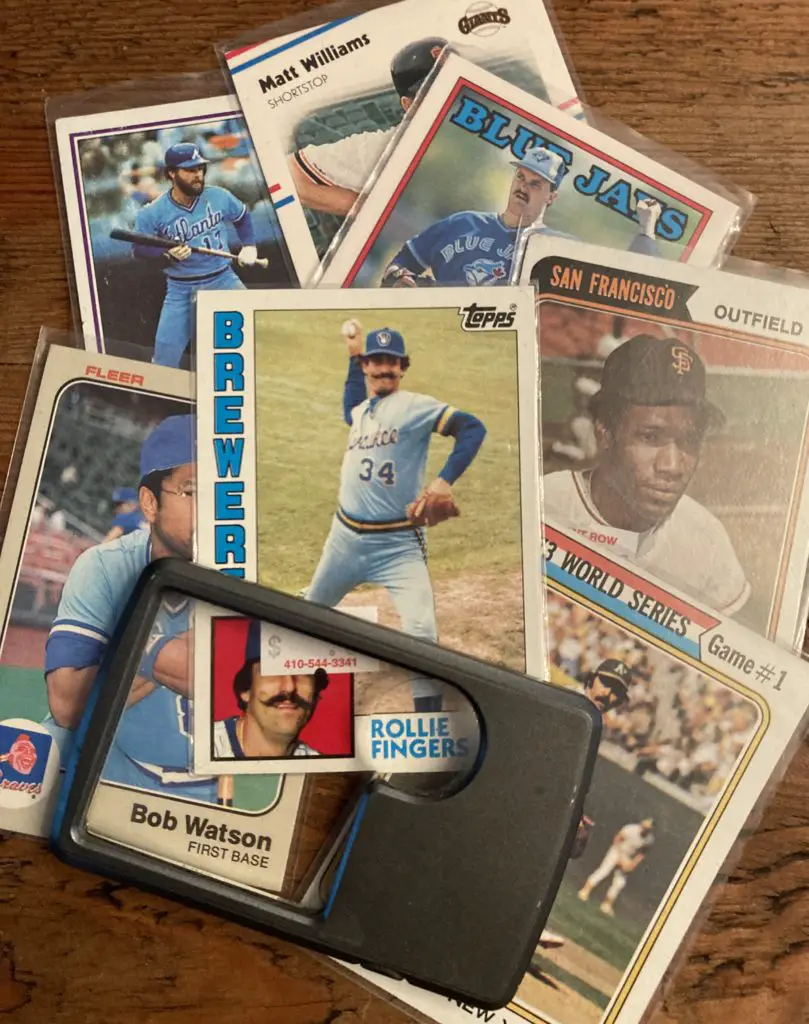Of all the industries to suddenly boom during the COVID-19 pandemic, few people could have predicted that sports card trading would soar to reach new heights. This sudden demand for sports memorabilia and collectibles has created a need for new card graders.
So, if you’re hoping to catch the wave by finding work with a grading bureau, you’re probably wondering how to become a card grader.

There are currently four companies offering certified card grading services. Professional Sports Authenticators (PSA), Beckett Grading Services (BGS), Sportscard Guaranty (SGC), and Certified Sports Guaranty (CSG). To become a professional card grader, you must secure a job with one of the companies by passing their grading test. Each service sets its own grading criteria. So be sure to learn more about their process at their dedicated websites.
This guide will take a closer look at the world of sports card grading. We’ll explain how you can secure a job as a grader. Share details about each company’s testing criteria, and discuss some of the day-to-day responsibilities you’ll be in charge of as a card grader.
So, if you’re ready to make a career of your love for sports cards, let’s get started!
What is Sports Card Grading?
Before we jump into the process of becoming a card grader, let’s first quickly review what sports card grading is. And why it’s become such an important industry for card collectors.
Essentially, sports card grading is the process of assessing a card’s condition and assigning it a numerical grade on a scale from 1 to 10, with 10 being a pristine, gem mint condition card. The value of a card can increase or decrease significantly based on its grade. With mint condition cards often selling for 10 times the price of a lower-graded card in the same condition.
Card grading is performed by professional companies, which use a combination of trained experts and high-tech scanning equipment to grade cards. Each company has its own process and criteria for grading, but the general steps are as follows:
- The card is first scanned for surface imperfections, such as nicks, scratches, or creases.
- The card is then examined for centering, print quality, and other factors that can affect its value.
- A final grade is assigned based on the card’s condition.
To succeed as a card grader, you must have a keen eye for detail and be able to spot even the most minor imperfections in a card’s surface or design. You should also have a strong working knowledge of the major sports leagues and players, as you’ll need to be able to identify cards based on these criteria.
In terms of technical skills, you must also be proficient with computer systems, scanners, cameras, and related software. As you’ll be responsible for inputting data about each card into the company’s grading system.
Finally, it’s helpful if you have previous experience working in customer service. As you’ll be interacting with clients on a regular basis.
Why the Sudden Demand for Card Graders?
Sports fans have been collecting and trading player cards for generations. But it wasn’t until recently that the card grading industry saw a massive influx of grading requests. In just a few years, the industry has grown to account for several billions of dollars worth of revenue. And it’s now facing a lack of quality graders to keep up with the demand.
This sudden interest in card grading can be traced back to the COVID-19 pandemic. As millions of Americans were forced to work from home, they found themselves rummaging through their attics and sheds, finding vintage sports cards they thought had long been lost. Hoping to cash in on their old cards, average they sent their cards off to be graded before selling their stashes online.

How to Be a Card Grader
To become a professional card grader you will need to get hired by one of the main recognized card grading companies.
There is no formal industry recognised certificate or qualification.
While there are many grading businesses now, we have listed the ‘big four’ companies below. Each have their own recruitment and training systems which we break down in detail throughout this article.
A lot of guys think they can start grading cards just because they have an eye for detail and a deep knowledge of sports. Unfortunately, it’s not that simple.
While you can certainly practice by grading your own cards. It won’t mean a thing without the certification of a professional grading company. Instead, you’ll have to find a job working with one of these four companies:
- Professional Sports Authenticators (PSA)
- Beckett Grading Services (BGS)
- Sportscard Guaranty (SGC)
- Certified Sports Guaranty (CSG)
These four companies currently account for the majority share of the grading market and are regularly hiring new card graders. Once hired, you’ll have the authorization to accurately assess and assign a grade to any sports card you come across. Keep in mind, though, that these companies are highly reputable and won’t hire just anyone. You must first prove your ability to accurately grade cards.
In the next few sections, we’ll take a closer look at the four companies’ testing requirements to help you better understand how to get a job as a grader.
How to Become a PSA Card Grader
If you’re interested in becoming a PSA grader, start by checking for available positions on their official website. There are no set qualifications to become a grader, such as a certificate or a license. However, it’s wise to first familiarize yourself with PSA’s grading scale. They grade cards on a universal 1 to 10 scale, ranging from PR 1 – Poor to GEM-MT 10 – Gem Mint.
However, beyond the universal grading scale, you must also be able to identify other issues such as:
- Off-center images
- Out-of-focus images
- Miscuts
- Marks, nicks, and scuffs
- Staining
- Defective printing
These factors all play into a card’s final grade . So be sure that you can identify these issues before you apply. During the application process, you’ll be tested on your knowledge of both unopened decks and individual cards. So come prepared with as much information as you can.
How to Become a Beckett Card Grader
Like PSA, Beckett also uses a standardized grading system to assess sports cards. Their system follows a similar 10-point structure but it maxes out at 10-Pristine, rather than Gem Mint. Additionally, to become a Beckett grader, you must have extensive knowledge of autograph quality, possible counterfeits, and historical design flaws/trends.
Beckett’s testing process is quite similar to PSA, requiring both a close eye for detail and a deep understanding of the industry. Once you feel prepared to tackle the application process, you can search their website to find available job openings.
How to Become a CSG Grader
To work as a grader for CSG, you must have at least 1 year of prior grading experience as a professional card dealer or collector. Additionally, you must have a deep understanding of modern and vintage card printing processes, including knowledge of accepted variations, defects, and flaws. This understanding will help identify counterfeits and prove authenticity.
Once you feel confident in your skills, you can apply through CSG’s official website. Additionally, CSG requires all of its new hires to relocate to Sarasota, Florida. CSG is based out of Sarasota and asks that all of its employees move to its home base. You may also be required to travel throughout the United States and abroad to attend conferences and deals around the world.
What About SGC?
Compared to the other top grading companies, SGC is far less transparent about their grading criteria and hiring process. However, it appears that you can apply for a position with SGC through third-party hiring sites, such as Indeed and SimplyHired.
Job Description and Day-to-Day Responsibilities of a Card Grader
As a card grader, you’ll be responsible for assessing the condition of sports cards and assigning them a numerical grade on a scale from 1 to 10. You’ll use a combination of your expert knowledge and the company’s grading system to determine a card’s final grade. The grading process assesses cards based on these five factors:
- Corners – The quality and condition of a card’s corners can greatly affect its final score. Since corners are easily dogeared and frayed, four top-condition corners are almost guaranteed to score a top grade. However, the appearance of a corner can be affected by the quality of the foil and surrounding ink. So it takes a careful eye to notice true defects.
- Centering – Centering refers to the placement of the image in relation to the card’s border. The company’s grading system uses a 60/40 standard. Meaning the image should take up 60% of the card’s front surface with the remaining 40% divided evenly between the border on all four sides. Perfect centering will score a card a 10, while a card that is significantly off-center will score a 1.
- Surface – The surface of a card is graded on its gloss, texture, and print quality. A card with a pristine surface will be free of scratches, scuffs, and staining and will have a glossy finish. The surface grade also takes into account the printing quality of the card. Which should be free of defects such as smudging, blurring, or missing ink.
- Edges – The condition of a card’s edges is important for two reasons. First, because a damaged edge can affect the card’s structural integrity. And second, because nicks and scuffs on the edges are very visible and can detract from the card’s overall appearance. The company’s grading system takes both of these factors into account when assessing a card’s edges.
- Extras – The final factor in the company’s grading system is what they refer to as “extras.” This includes things like autographs, game-used memorabilia, and serial numbers. A card with any of these extras is likely to score higher than a card without them.
Other Card Grading Responsibilities
As a card grader, you’ll also be responsible for inputting data about each card into the company’s grading system. This data includes the card’s dimensions, player name, team name, league, position, and more. You’ll also be responsible for taking high-quality photos of each card to be used in the grading report.
When you’re not grading cards, you’ll be interacting with clients, answering their questions about the grading process, and resolving any issues they have. It’s important to maintain a high level of customer service as your interactions with clients will play a large role in the company’s reputation.
Card grading is a fast-paced industry so you must be able to work quickly and accurately while still paying close attention to detail. The ability to multitask and stay organized is also important. You’ll be handling a large volume of cards on a daily basis.
How Much Money Do Card Graders Make?
Although the card grading industry is booming, the pay for graders remains relatively low. The average salary for a card grader is around $20,000 per year but, depending on the company, you could make as little as $16,000 or as much as $35,000. Keep in mind, though, that these salaries are based on national averages and may be higher or lower depending on your location.
For example, graders in New York City could expect to make significantly more than the national average due to the high cost of living in the city. Additionally, your salary will also depend on your level of experience. Entry-level graders can expect to make on the lower end of the salary spectrum. While experienced graders will likely earn closer to the higher end.
The good news, though, is that many companies are now offering incentives to new hires. CSG, for example, is currently awarding a $1,500 bonus to all new hires as a way to bring in new expertise. Thanks to continued demand for card grading services, wages are sure to go up, as are bonuses and incentives for new hires.

Final Thoughts
The sports card industry is currently going through a renaissance, with a new generation of collectors driving up the value of cards. As a result, there’s a sudden demand for card graders to assess the condition of cards and assign them a numerical grade. If you’re hoping to join this rapidly growing industry, master your skillset and apply for a position with PSA, Beckett, CSG, or SGC.
- 7 Classic John Smoltz Rookie Baseball Cards - October 17, 2022
- Best Josh Allen Rookie Cards - October 12, 2022
- Charles Barkley Cards – Top Picks - August 29, 2022

